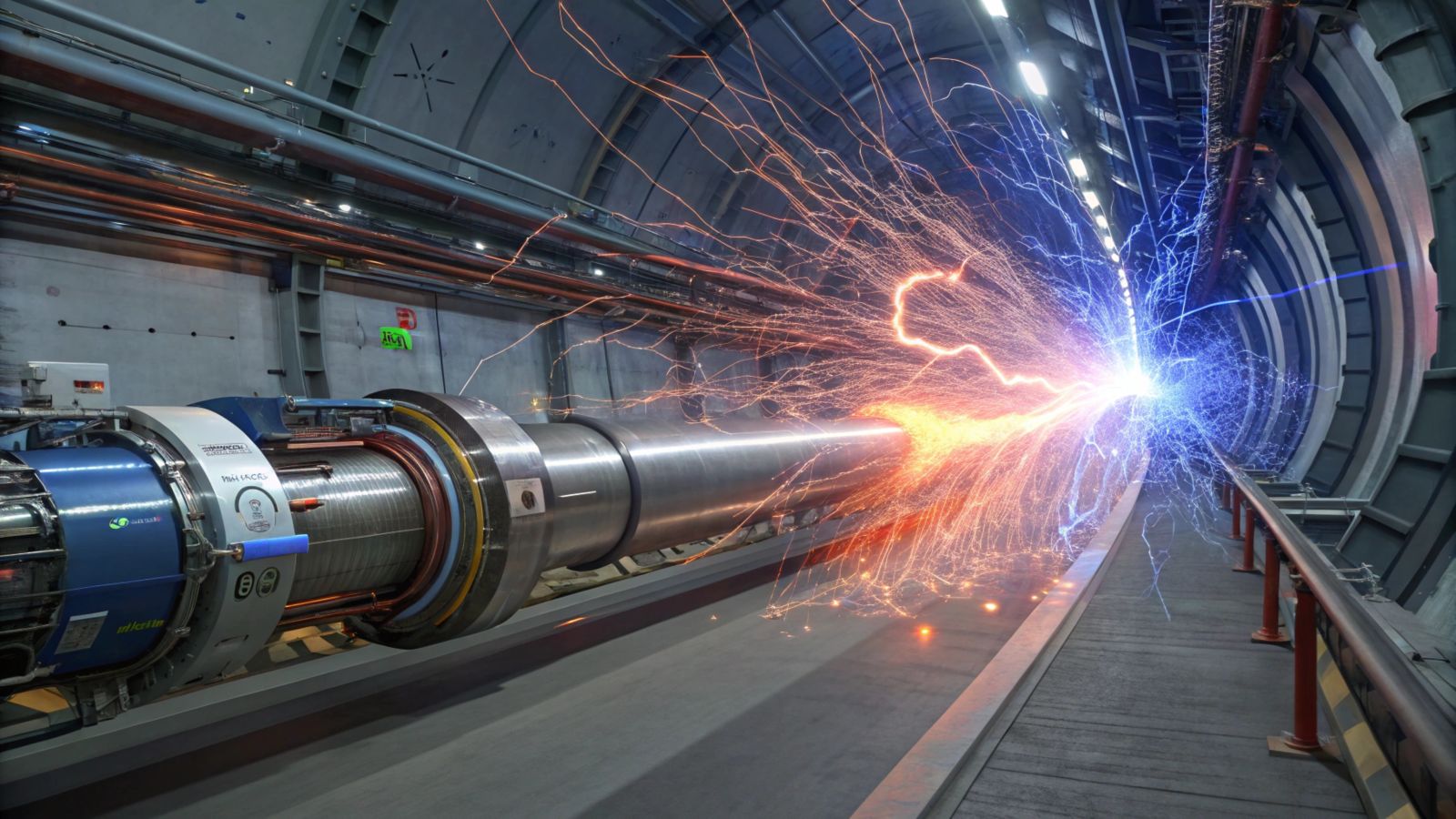An unknown form of matter detected at the LHC? ⚛️
Follow us on Google News (click on ☆)
The CMS experiment at the Large Hadron Collider (LHC) revealed anomalies in top quark pair production data. These particles, among the most massive and short-lived, could form a bound state with their antiparticles, thus creating toponium. This observation, though preliminary, opens new perspectives on the fundamental laws of physics.

Top quarks, due to their extremely short lifespan, were considered incapable of forming bound states. However, the latest data suggests they might briefly unite with their antiparticles. This hypothesis, if confirmed, would represent a major breakthrough in particle physics.
Analysis of proton-proton collisions showed an excess of top quark pairs at the production threshold energy. This excess could be explained by the formation of toponium, a state predicted by quantum chromodynamics but never observed. Researchers remain cautious, as other explanations are still possible.
The discovery of toponium would complete the quarkonia family, after charmonium and bottomonium. Its size would be even smaller, making it the most compact hadron ever observed. This unique characteristic offers a window into the properties of the strong force at unprecedented scales.
Detecting toponium was considered nearly impossible due to the extremely short lifespan of top quarks. Their decay before forming a bound state seemed to make observation unattainable. This potential discovery showcases the technological and analytical progress achieved at the LHC.
The CMS and ATLAS teams are now collaborating to further investigate these results. Confirming the existence of toponium will require additional analysis and more precise data. This collaboration highlights the importance of joint efforts in high-energy physics research.
What is toponium?
Toponium is a hypothetical state formed by a top quark and its antiparticle, the antitop quark. Unlike other quarkonia, such as charmonium or bottomonium, toponium would be extremely short-lived due to the top quark's very brief lifespan.
The formation of toponium is predicted by quantum chromodynamics, the theory describing the strong interaction that binds quarks together. However, its direct detection was considered a major challenge in particle physics.
If toponium exists, it would be the smallest known hadron, with a size smaller than bottomonium. This characteristic would make it a unique object for studying the limits of the strong force.
Confirmation of its existence could also provide clues about phenomena beyond the Standard Model, such as the nature of dark matter or the unification of fundamental forces.